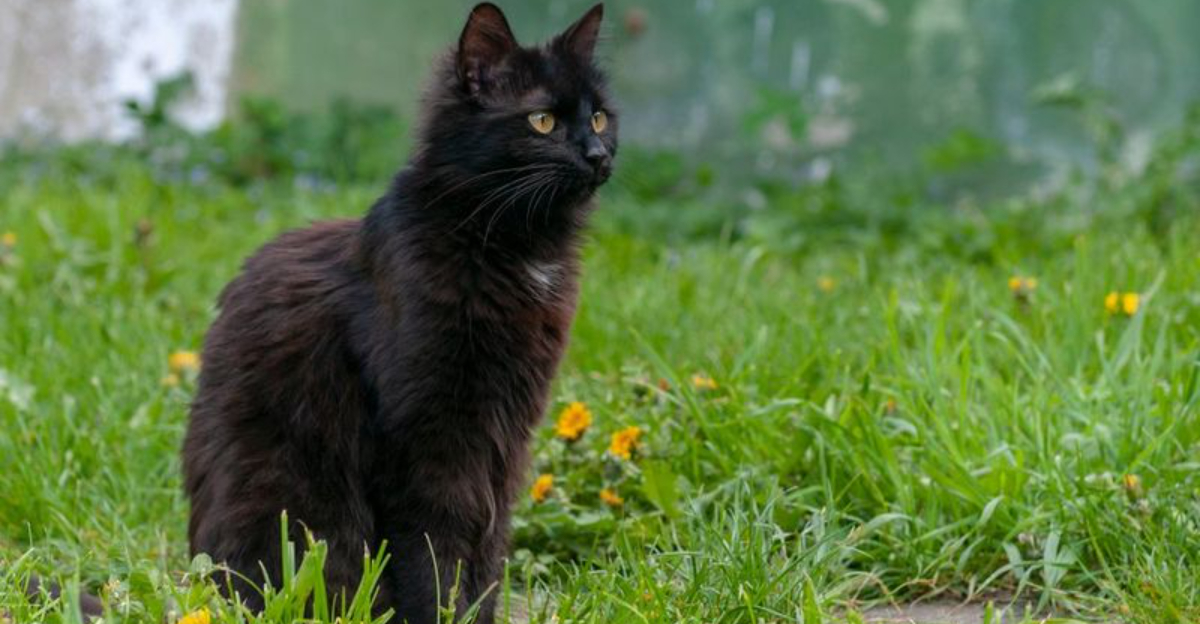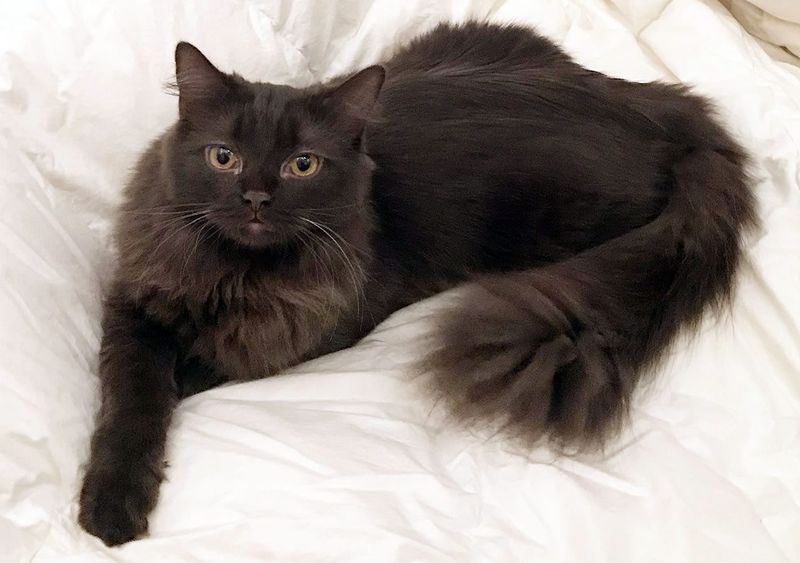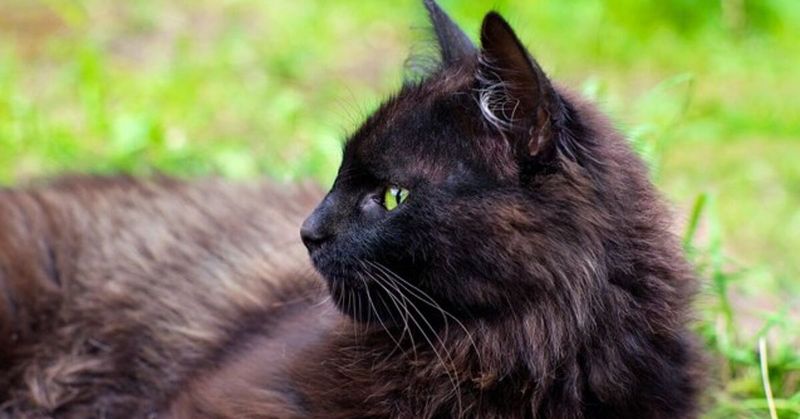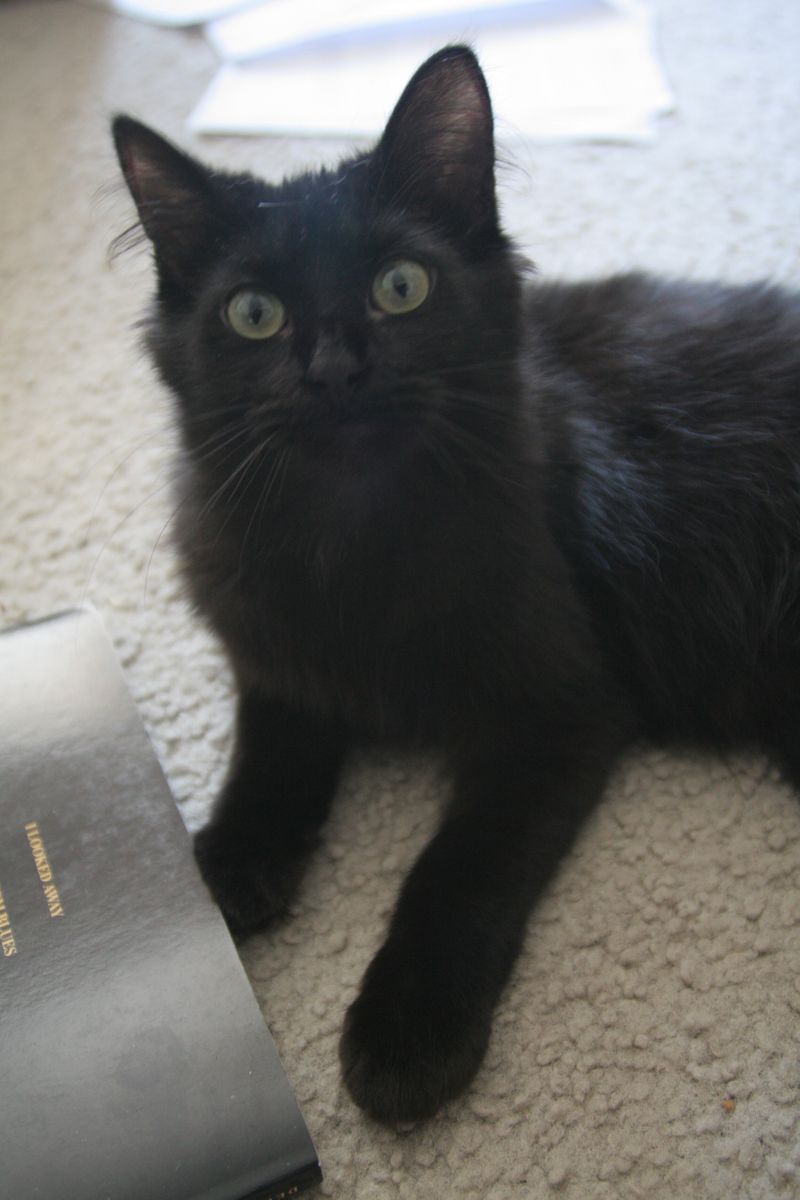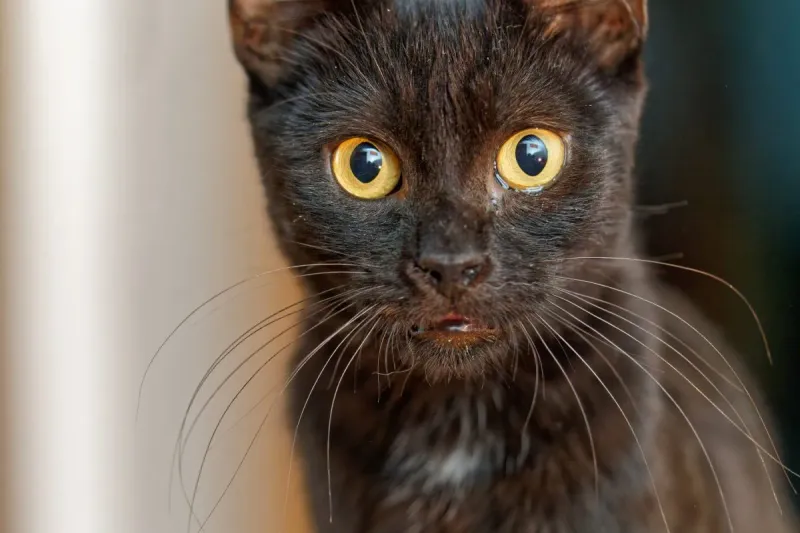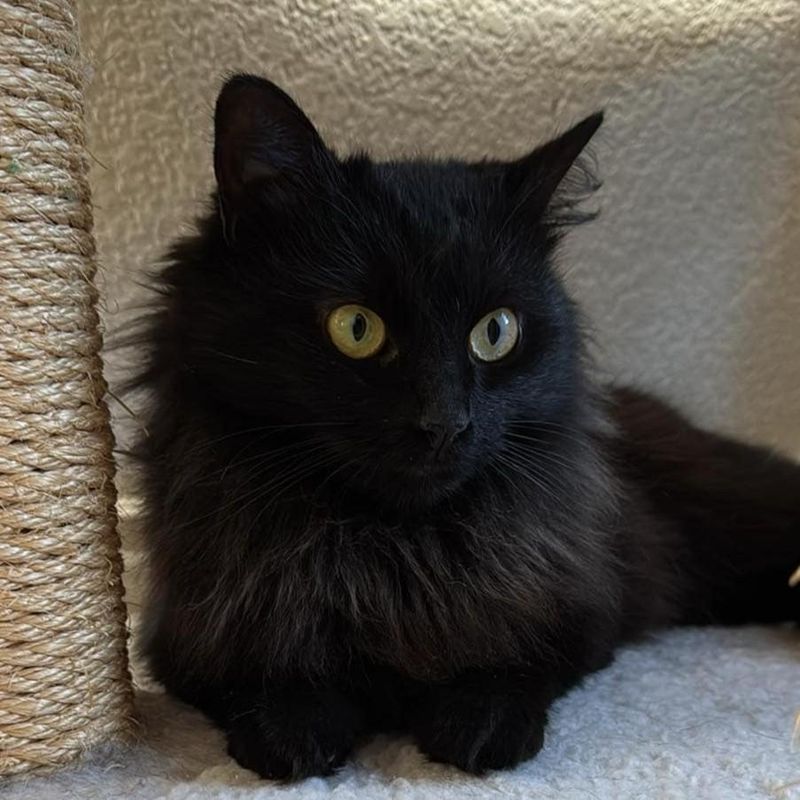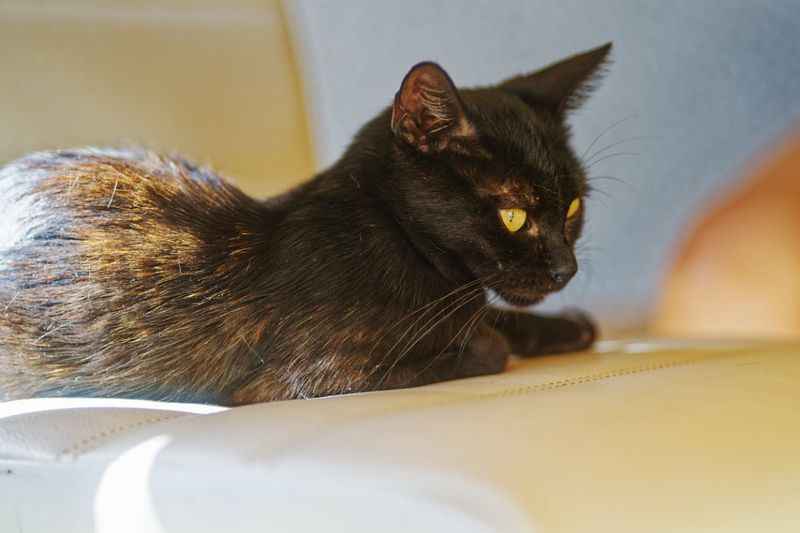📖 Table of Content:
In the ever-expanding tapestry of feline breeds, some cats are remembered for their majestic looks, others for their delightful quirks — and then there are those like the York Chocolate, who’ve all but vanished from memory. Once roaming the barns and homes of New York State, this striking cat with a chocolatey coat and a heart full of devotion is now classified as an extinct American breed. Though she never reached mainstream fame, her legacy is far too unique to be forgotten.
What set the York Chocolate apart wasn’t just her plush coat or rare coloring — it was a blend of serendipity, heart, and a quietly fading story. Born from a humble lineage, she emerged not from elite breeding stock, but from regular barn cats with a touch of magic in their genes. Her sudden rise and quiet fall are reminders that some of the most extraordinary animals don’t always leave behind grand legacies — sometimes they just leave behind soft fur in memory.
If you’ve never heard of this rare breed or only know her by name, you’re in for a treat. Here are 7 little-known facts about the extinct American York Chocolate cat — one of the most overlooked feline stories in modern history.
1. Discovered by Chance
It all began not in a breeding center or laboratory, but on a goat farm in 1983. Janet Chiefari, an ordinary farmer with no intention of starting a cat dynasty, noticed something special in a brown, semi-longhaired kitten born to her mixed-breed barn cats. Rather than ignore this unusual beauty, she allowed curiosity to guide her, and the idea of a new breed took root. Over time, she began to pair cats with similar coloring and texture, carefully building a line that consistently displayed those signature chocolate coats. Unlike purpose-bred cats with years of pedigree behind them, the York Chocolate was an organic discovery — nature’s own little surprise. Few modern breeds can claim such a spontaneous and heartwarming origin. In that quiet barn, a feline legacy was born, one that would vanish just as gently decades later.
2. Hypoallergenic Traits
Interestingly, York Chocolates often defied expectations when it came to allergies. Unlike many longhaired cats that send allergy sufferers running, this breed produced less dander and had a coat with no thick underlayer. That meant less shedding, fewer allergens, and easier grooming — a triple win for cat lovers. People with mild sensitivities found themselves surprisingly unaffected by her presence, even when other breeds caused a reaction. While not scientifically certified as hypoallergenic, anecdotal reports painted a consistent picture of sneeze-free companionship. This low-maintenance trait added to the cat’s appeal, even if few knew it at the time. Her coat was more than beautiful; it was quietly accommodating.
3. Struggles with Recognition
Despite her charm and visual allure, the York Chocolate faced a cold shoulder from the industry’s gatekeepers. Major cat associations like the Cat Fanciers’ Association (CFA) and The International Cat Association (TICA) never officially recognized the breed. A lack of pedigree history, combined with low breeder numbers, kept her out of the formal competition ring. While smaller groups in Europe and Canada granted her “experimental” or “provisional” status, the breed never gained the traction it needed to survive long-term. Without institutional support or widespread demand, interest gradually withered. It’s a classic example of how bureaucracy and visibility can impact whether a breed lives or dies. She was adored by a few — but overlooked by the many.
4. Unique Personality
Quirky, loyal, and irresistibly clingy — the York Chocolate wasn’t your average aloof cat. Instead of keeping to herself, she would often shadow her human from room to room, observing and engaging with a curiosity closer to a dog than a feline. Many owners described her as a “Velcro cat,” always wanting to be part of the action. She adored attention, was playful yet not overbearing, and adapted beautifully to family life. Striking a rare balance, she was affectionate without being needy, active without being chaotic. Her emotional intelligence stood out in a world where many cats preferred independence. Owning a York Chocolate felt less like having a pet and more like gaining a loving, furry companion.
5. Rare Coat Colors
When you think of breed standards, you might imagine a palette of shades — but for the York Chocolate, beauty came in just two flavors. The breed was officially recognized in solid chocolate and lavender, each rich and rare in its own way. Chocolate offered a deep, warm brown — almost like melted fudge — while lavender shimmered with a silvery, pastel glow that bordered on mystical. Occasionally, white markings appeared, giving the cat a tuxedo-like elegance. These limited color combinations added to her charm and exclusivity, helping her stand out in a crowded field of breeds. Yet the simplicity of her coat matched her understated story: refined, subtle, and striking without trying too hard. No flashy patterns were needed — just pure, elegant tones.
6. Peak Popularity in the 90s
There was a brief moment when the York Chocolate seemed destined for stardom. In the early 1990s, breeders in North America and parts of Europe began showcasing her in exhibitions, hoping for official recognition. Magazine features, cat shows, and local press helped shine a modest spotlight on the breed, which generated curiosity among feline enthusiasts. But without backing from the big associations, and with few breeders to champion her, momentum slowed. Interest fizzled just as quickly as it had sparked, and breeding numbers began to decline. Unlike other breeds that have riding waves of popularity, the York Chocolate’s fame was more of a gentle ripple. She had her moment — but the world wasn’t ready to catch on.
7. Extinction
No grand announcement marked the end of the York Chocolate cat. Breeders moved on, cats aged, and the remaining bloodlines quietly dwindled. Unlike endangered species that prompt global campaigns, the York Chocolate slipped away silently, with no major preservation effort to rescue her. The few that remained were often mixed with other cats, losing the purity of the breed. Today, she is listed among extinct American cat breeds, with no verifiable purebreds known to exist. It’s a sobering reminder of how delicate breed preservation can be when interest and infrastructure aren’t there to support it. And though she may be gone, the story of the York Chocolate remains — a sweet, soft whisper from a forgotten chapter of feline history.
